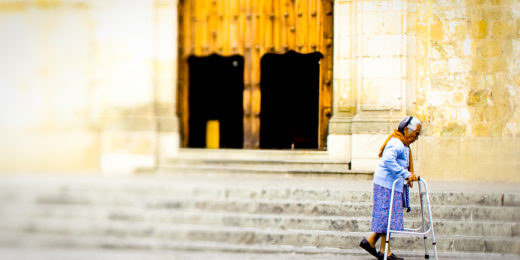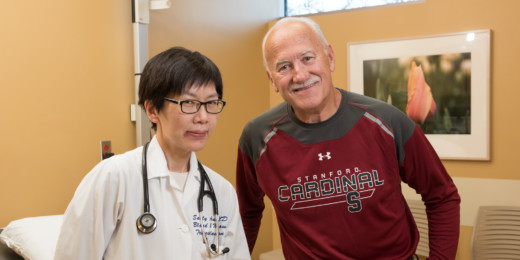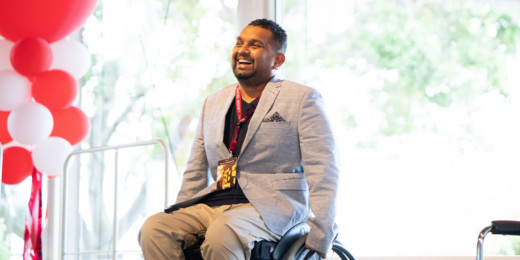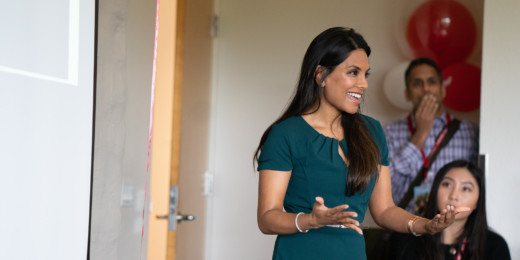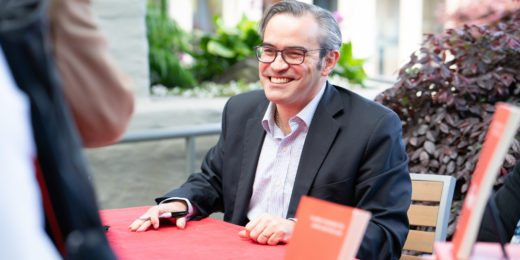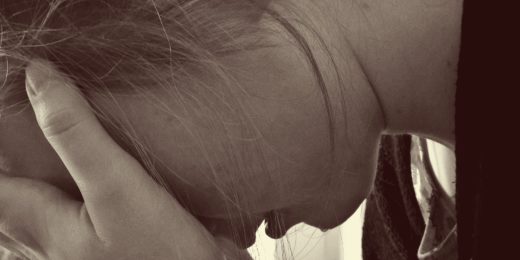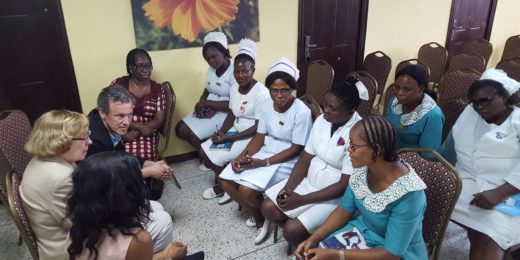A kidney disease of unknown origin is sickening many men in Sri Lanka. Stanford researcher Shuchi Anand is working to understand it and to improve care.
Category: Patient Care
Asking hard questions to reduce maternal mortality
It’s one of the hardest questions in medicine: Should hospitals ever stop spending money to avert certain preventable deaths?
New app screens for undiagnosed cases of Alzheimer’s disease
With half of all cases of Alzheimer's disease and related dementias going undiagnosed, researchers develop app to help in early screening
Brand name or generic? Study probes use of drug names, which ties to health care costs
Stanford's David Ouyang sifted through more than a million texts to find out if clinicians inadvertently endorse brand-name medications over less expensive generic alternatives.
Meet your match: A bone marrow transplantation leads to an international friendship
When Ron Gross needed a bone marrow transplant, an international donor stepped in, providing a gift that led to a lifelong friendship.
Writing through cancer
Cancer survivor Ali Zidel Meyers reflects on joining a cancer writing group and how it helped her and others through their experience.
Stanford team tests sleep monitoring for asthma patients
Ask a child with asthma how easily he or she can breathe, and you won’t get an objective answer. But where Q&A fails, technology can take over, according to a team of Stanford researchers who are developing a way to predict asthma attacks in advance.
Data and design thinking to shape the future of medicine, Stanford Medicine X | ED speakers say
Dean Lloyd Minor from Stanford and Bon Ku from Thomas Jefferson University weigh in on forces transforming medical care.
Say yes: Dinesh Palipana appeals for greater inclusivity, compassion in medicine at Medicine X | ED
Australian physician Dinesh Palipana advocated for the inclusion and acceptance of people with disabilities in medicine at Stanford Medicine X | ED.
The best way to prepare for a career in medicine and the importance of curiosity at Medicine X | ED
Medical students and physicians can learn important lessons from both landscape architecture and journalism, Stanford Medicine X | ED speakers explained.
A call to action at day one of Stanford Medicine X | ED
Executive Director Larry Chu and keynote speaker Victor Montori welcome attendees to day one of Stanford Medicine X | ED.
Stanford Medicine X | ED returns to the stage this weekend
Stanford Medicine X | ED, the two-day conference that brings together patients, researchers, physicians and students to improve medical education, returns this weekend.
On caring for suicidal patients: A psychiatrist reflects
Stanford psychiatry resident Nathaniel Morris describes what it’s like to treat patients in the hospital after an attempted suicide.
Symposium to kick off effort to improve electronic health records for physicians and patients
Stanford Medicine will unite leading minds in patient care, technology, design thinking and public policy to help shape the future of electronic health records and at the EHR National Symposium on June 4.
Improving cancer care in Nigeria
Stanford Medicine doctors have partnered with colleagues in Nigeria to improve cancer care with the goal of reducing inequities.
Symposium discusses promise and pitfalls of technology in medicine
A Stanford symposium asks: In the midst of technological progress, how do doctors retain the human touch with patients and ensure that new developments enhance, rather than impede, their profession?




